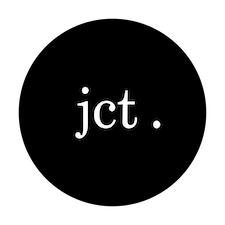By Courtney Cook
No matter which entrance you use, White River Junction's Tip Top building feels like a journey through the looking glass. The many-colored hallways beckon with possibilities: to the left is a stairwell offering photogenic views from every landing; straight ahead is a wide, brick, corridor lined with mixed-media collages; and still further in is a sunshine-filled former loading dock with a painted on-ramp. Art objects are everywhere: paintings, sculptures, light fixtures. There is a sense of suspended animation, as though you’ve interrupted a creative romp. You have an instinct to signal that you, too, are a friend of the arts, that you come in peace and gladness
It is possibly the only retail wonderland good enough for Nancy Heyl’s vintage vision turned storefront, Nancy the Girl. Tucked away in the back of the building, the store entrance is atop a wide, shiny-red set of stairs leading to a pair of curtained glass doors. On the left is a mannequin with a television helmet, reminiscent of the original MTV logo. On the right is another mannequin in a gathered silk skirt and dotted blouse with statement sleeves. At first glance what lies beyond the doors is unclear: it might be the gateway to a movie set or a Victorian fortune-telling room. Once inside, the mystery is cleared; this is a house of fashion–an atelier with racks of garments organized by color, a wall of hats, glass cases of costume jewelry, a velvet couch in alizarin crimson, and a toile-curtained dressing room. There’s even a nod to the imperatives of the 21st century: a ‘selfie’ nook, complete with lighting and backdrop, just waiting for someone to strike a pose.

photo by Courtney Cook
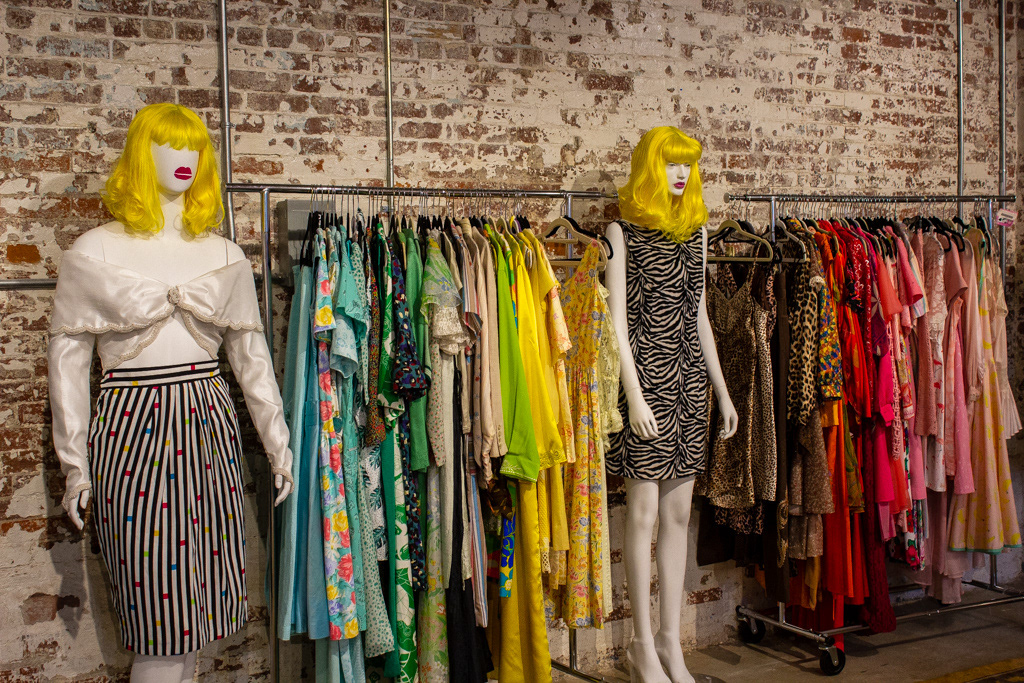
photo by Hazel-Dawn Dumpert

photo by Hazel-Dawn Dumpert
“It’s like this,” writes Nancy on a recent instagram post, “you come in thinking you are going to browse the racks casually and suddenly find yourself being zipped into a dress you didn’t think would fit but is perfect, and we all gasp at how stunning you are.”
And it is just like that, as Junction editors Hazel-Dawn Dumpert, Taylor K. Long, and I can personally attest. We arrived as ordinary mortals, slightly dazed to be out of the house at all and left an hour later having envisioned ourselves in roles that have been out of reach for a year and a half, if not for decades. It was life reimagined via wardrobe: a magenta gown with gold thread detail, a sleeveless white cotton and crochet shift, an expertly cut little black dress in silk crepe by designer Norman Norell, a pink shirred 1940s style day dress, and a Jane-Austen-only-orange empire waist gown.
I caught up with Nancy to talk with her about her inspiration for the store, her career in costume design, her love of thrifting, her mission to bring vintage fashion into reach for all sizes, and her love of all things White River Junction.
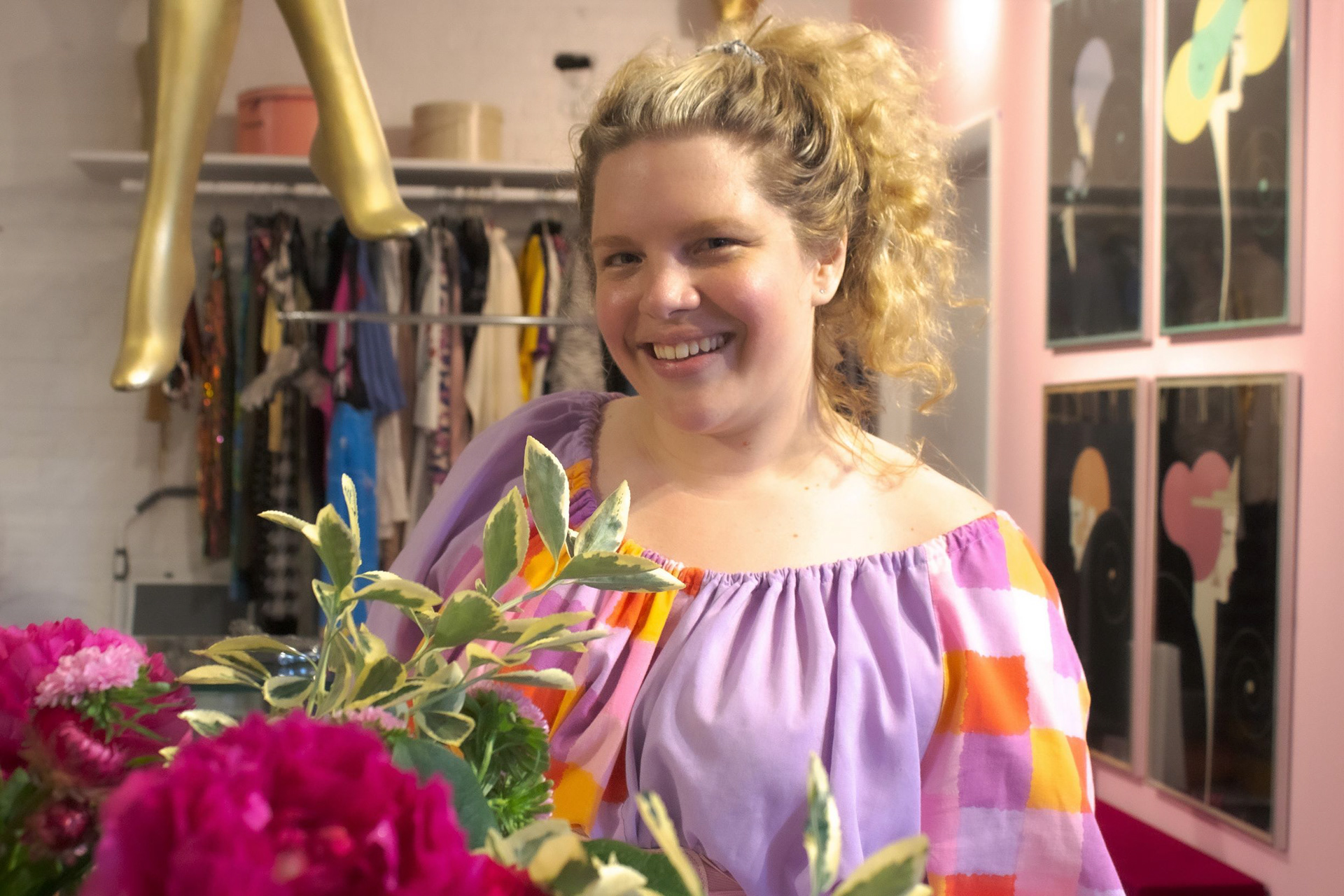
photo by Hazel-Dawn Dumpert

photo by Hazel-Dawn Dumpert
Courtney Cook: I know that working with Kim Souza at Revolution was formative for you, and we will get to that story, but could we start with you telling us a bit about your most recent venture in New York City?
Nancy Heyl: Sasha Velour (drag icon and graduate of the Center for Cartoon Studies) had just won Drag Race and needed help with costume management. I had been styling her throughout the series and wanted to keep working with her. I was able to find a live/work space on West 26th that I made into a pop-up vintage/costume shop, and Sasha introduced me to a cool, queer, young scene made up of her Drag Race friends who became my customers. They have the same need for self-expression as any of us, but have different concerns. There are the obvious challenges of tailoring and sizing, but there is a whole set of style considerations in drag culture, as well. It was a great learning experience for me.
Courtney: Can you say more about what kinds of things you learned?
Nancy: Here’s an example: In drag culture gloves are important. And, it turns out that most of the gloves that you see in films and television are made by one tiny company in the garment district, Wing and Weft Gloves, which is owned by Katie Sue Niklos. I got to know Katie through talking about Sasha’s glove designs. It’s the only female-owned glove company—it’s one of the only glove companies left, and they still even make debutante gloves. Getting to work with people like Katie who are experts in their craft was really cool. Also, just working and living in NYC and being around all of the self-expression and style choices—everyone is expressing themselves all the time in NYC—was inspiring. The atmosphere is so nonjudgmental—anything goes—and so you can choose who you want to be on any given day. If I wanted to be anonymous and unseen, I could throw on a ball cap and blend in. If I wanted to stand out, I could do that, too. I made some great friends and learned a lot.
Courtney: Let’s go back and talk a bit about your upbringing and education. How did you get interested in costume design and vintage fashion?
Nancy: I originally went to school for acting, but I found myself drawn to the costuming part of acting, to what was going on backstage. I have always loved clothes–I had a carrying case of Barbie clothes that I took everywhere when I was a kid. And, I started thrifting when I was a teenager, partly because of the sizing that is available in second-hand stores. You can find cooler things in larger sizes in thrift stores than in regular stores. As a teenager, it was important for me to be able to create my own identity that didn’t feel like I was dressing like a middle-aged woman at 14. The idea of costumes for a stage production isn’t that different from dressing as a means to self-expression.
Then, when I working at Revolution, I learned about thrifting from the point of view of being the person running a store. Around this time, I realized I have a superpower in that I can eyeball sizes quickly; it’s easy for me to tell if something will fit, which is important in second-hand and vintage retail. I call it “body Tetris.” My brain works in shapes–I can look at someone and see what cut of clothing will suit them. I also worked at the Dartmouth College Costume Shop which gave me a fearlessness about altering clothing because in theater you are always adding a fringe or cutting a hem, or otherwise adjusting the fit or style. I had some sewing and tailoring skills already, but the Costume Shop gave me permission to play. It’s not about making the perfect garment with perfectly taped inseams. It’s about making something look good on the person who is wearing it.
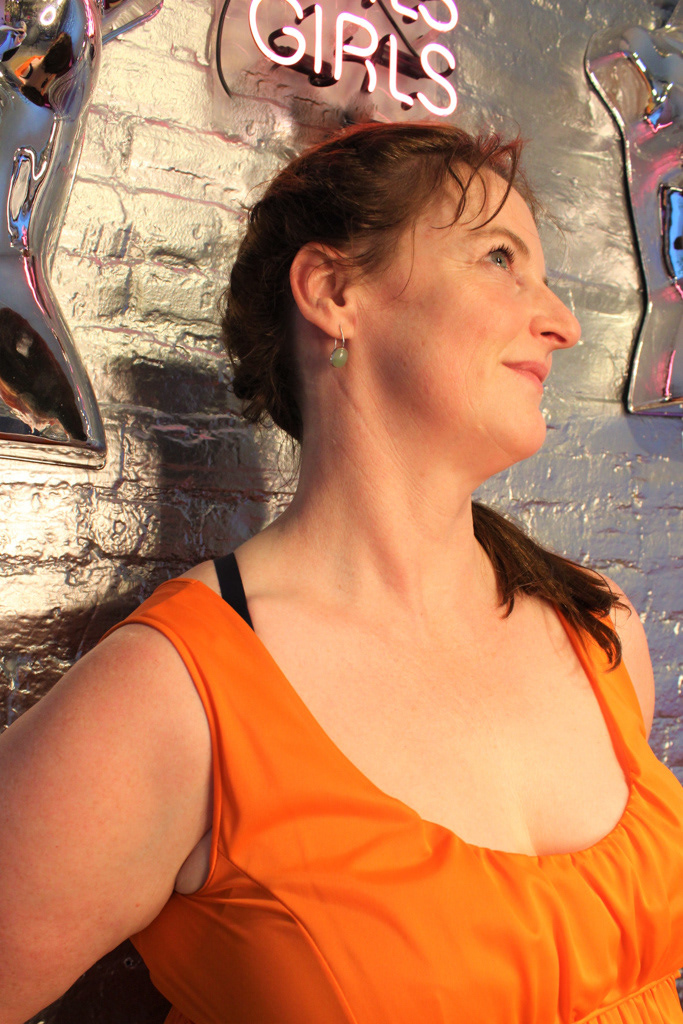
photo by Hazel-Dawn Dumpert
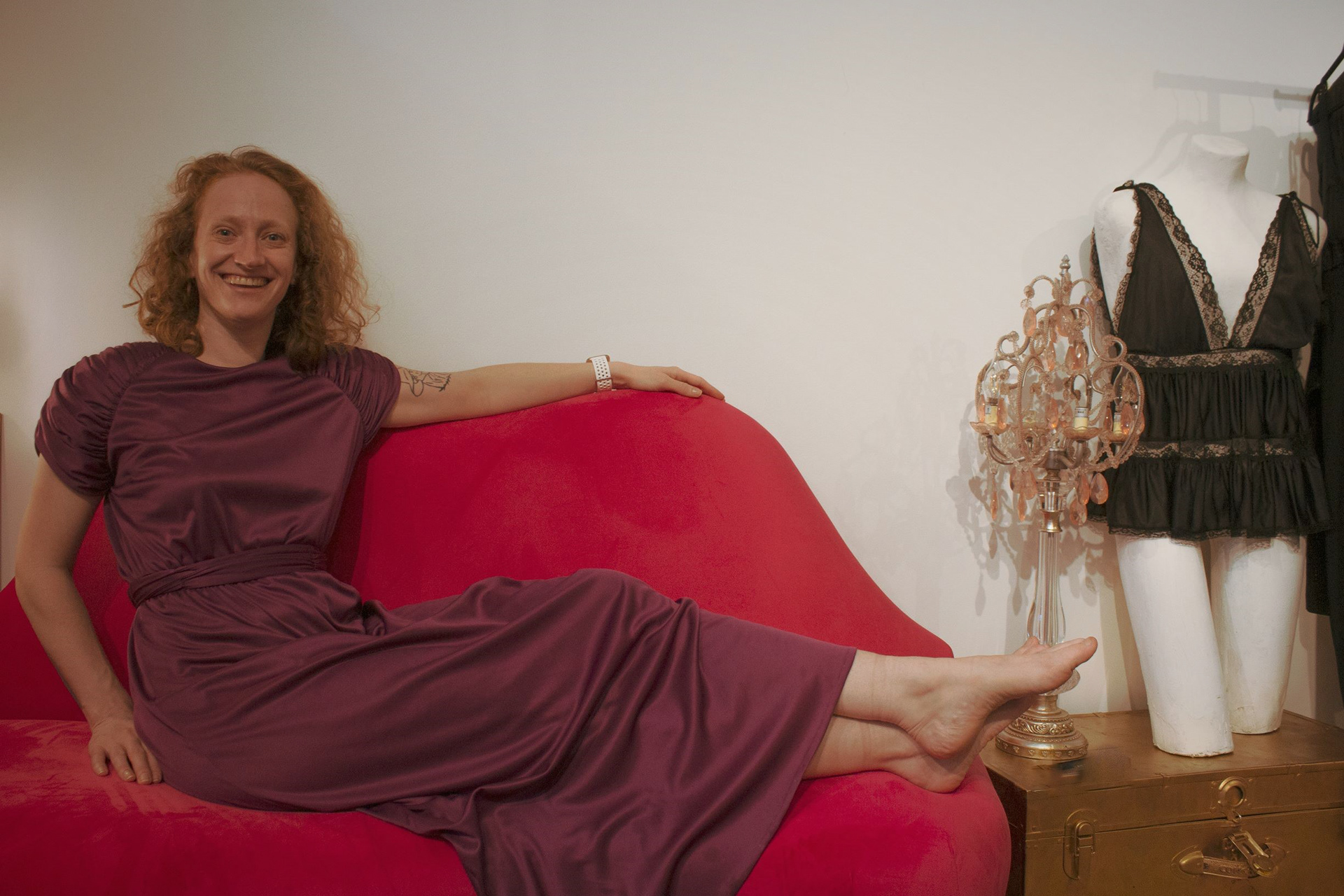
photo by Hazel-Dawn Dumpert
Courtney: When I was in the store, you mentioned that the toile curtains for the dressing room came from your mom. How has she shaped your understanding of fashion?
Nancy: My mom is very creative and great at sewing. She made amazing Halloween costumes for us when we were kids. And, for as long as I can remember, I watched her care about her clothes. I remember how she hated shoulder pads and would cut them out of anything she wore. I learned from that–she and my sister have broad shoulders, so of course they hate shoulder pads. I don’t have broad shoulders and like the silhouette that they can give. My mom has been incredibly helpful with the new store, as well.
Courtney: Tell us about your vision for the new space:
Nancy: My starting idea was for something more like a showroom than a store. I wanted to create a personalized, showroom-style shopping experience where I can help people find the exact special thing they are looking for. What is going to set my store apart is that I want to help people achieve their fantasy version of themselves. It’s not about being practical necessarily, it’s about finding things to wear that make you feel good, whether it’s for a special occasion that is coming up or because you’ve come through an illness or other life change and want to figure out how to feel good about yourself again. I want to help people dress for their inner self—whatever that happens to mean on any given day. I’ve always had the notion of self-expression as being important. There are plenty of days when we just want to go about our day and don’t necessarily want to be noticed, and that’s fine, but there are times when we do want a response from others—to get that positive affirmation and appreciation for who we are. I am here to help with that.
The front part of the store is a showroom with vintage clothes that are like the ones I sell on the Nancy the Girl site. The back of the store is a workshop area where I can do fittings and alterations. I will be able to use that space for upcycling thrifted clothes, adding embellishments, and tailoring.
I also want the store to be a gathering space—when it’s safe to gather! I’m envisioning something like a twice monthly “content creation” night. One example would be to invite people to visit the store to experiment with styles and then invite some local artists to take cool photos. You could do this with a group of friends to celebrate a birthday, or as a mother/daughter night. Or, for a bridal party. There are a lot of options. Being able to experiment in a playful and fun environment with good lighting and a good photographer, as well as with someone who knows how to style clothes is a great way to learn to see yourself a bit differently—to get rid of some of those limiting thoughts we tend to have about how we look.
The store is meant to be a mix of what it was like to visit an old school couturier to have your fantasy wardrobe custom made, and what it’s like to have a cool big sister who talks you through your first bra. It’s about having an elevated fashion sensibility and the loving encouragement—both.
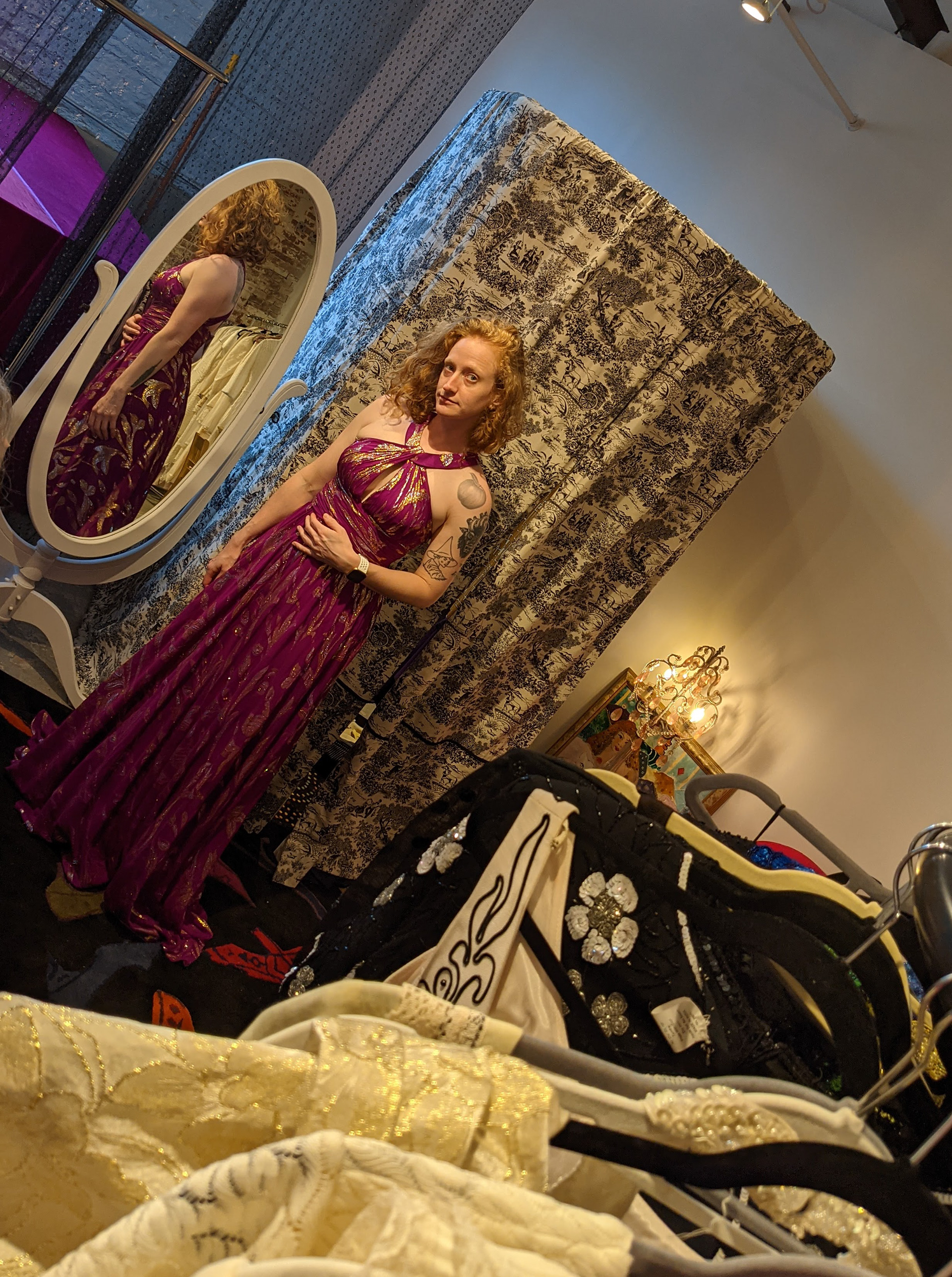
photo by Courtney Cook

photo by Hazel-Dawn Dumpert
Courtney: Do you think we have finally come to the beginning of a good—or at least better—time for celebrating all different kinds of bodies through fashion?
Nancy: One of the things I’m especially interested in is helping people with life transitions, with “figuring out who you are next.” Bodies change—whether through aging, or illness, or just lifestyle changes—and rediscovering who you are in each phase is important, and so is celebrating any weight and any gender expression. When I was younger, I would worry about whether something I wanted would be in my size or if it would look good on me. Because size selection was sometimes narrow, I got into a habit of just accepting whatever was available in my size, whether it reflected my personality or not. I was afraid of judgements from salespeople, too. I think a lot of us relate to that fear of walking into a clothing store and having the salesperson look down on you.
When I started working at Revolution, it was interesting to see that everyone has these feelings, no matter what size they are. Everyone comes out of the dressing room with that reaction of “what is wrong with me,” instead of what is working. What I love about the store is that Kim [Souza] has, over time, created a really strong environment of self-love and positivity and looking at yourself differently. Being able to do this is important because if you don’t feel comfortable to try things—to experiment—to stand in front of a mirror and talk over a look with someone—you can’t figure out what you like. This is especially true in the trans community because it’s even harder to find safe spaces for discovering your personal style. The problem is that you get stuck in the silhouette that is the easiest for you—or the one that your mom or some adult from back in the day told you was “flattering” when it may not even be the best look for you, or the one that makes you feel like yourself.
One of the things I hope is that people will come to the shop and try on things outside of their comfort zone. It would be nice if I could help get rid of those messages that we tell ourselves on repeat—things like “I can’t wear horizontal stripes.” All of that stuff needs to be questioned.
Courtney: I love this–and it’s true. And yet, vintage clothes are often sized very small—people were so tiny back in the day. Can you tell us a bit more about your experience with altering vintage clothing for all sizes?
Nancy: One of the fun things I did last summer was to work with Allyce Good on altering vintage clothing to fit modern bodies. I met Allyce when she was still in high school—we were both working on a film set—and then we both worked at Revolution. She went on to work in an atelier in Paris. More recently, we have spent time working together on developing techniques and designs so that people with larger bodies can wear vintage clothes and vintage looks. The NYC drag and burlesque communities are a big influence on me in this area. Found fashion will always be part of Nancy the Girl, but there’s a whole emerging space for using vintage fabric and embellishments to make new things. This is why I wanted the store to have a showroom area and a creation zone. I think there’s a real desire for and enthusiasm for this kind of expression in the Upper Valley.
Another vision I have that is related to this, is to use my connections in NYC to offer workshops and performances. I am envisioning a weekend workshop in burlesque and burlesque clothing with my friend Darlinda who performs in the city. There’s already a cool burlesque scene in the Upper Valley, and the body positivity, sexiness and femininity of that is contagious.

photo by Hazel-Dawn Dumpert
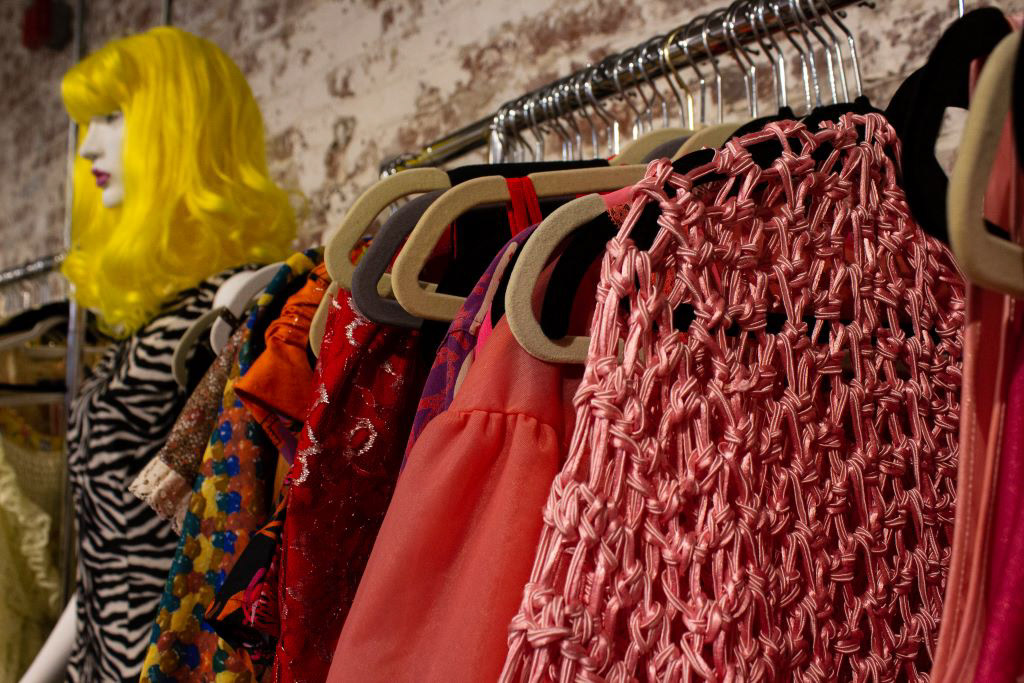
photo by Hazel-Dawn Dumpert
Courtney: What is it about White River Junction that pulled you back?
Nancy: The people! Kim Souza was the one who got WRJ started on the “make your own fun” path. She was one of the first people to really go out and inspire people to make WRJ a place that is special. Also, Matt [Bucy] and Gabriel [Quirk] who are right upstairs from me, which means a lot because Matt is one of the original revitalizers of the community. He and Gabriel took me to my first Mardi Gras in New Orleans in 2013 and it was a turning point for me, and Gabriel has taught me a lot about costuming. And what they have done with Tip Top is amazing. WRJ is such a creative and supportive community that I don’t even feel frightened of taking the risk of opening up a store. I knew I would be met with loving arms. I loved the space in New York City, but it was also my living room. This new space can be a fantasy world—for me and for my clients.
Courtney: It sounds magical.
Nancy: You know, it’s funny, I realized recently that my business is called Nancy the Girl, but I finally feel like I’m a grown up. For a little while I wondered if I should change the name. But then I realized that Nancy the Girl is honoring the little girl that I was. It is about loving that little self and encouraging her and telling her she can be and look like whoever she wants to. This is what I am hoping to give people of any age. I want to help people tap into that childhood abandon we all have inside of us and operate free of judgment when they get dressed in the morning.
June 2021
Courtney Cook is a writer based in Hartford, VT. She has degrees from Dartmouth College and the University of Wollongong, Australia, taught English literature for ten years, and now works as a technical writer and marketing manager. You can read her writing at the Los Angeles Review of Books and in her newsletter, Survival by Book.
